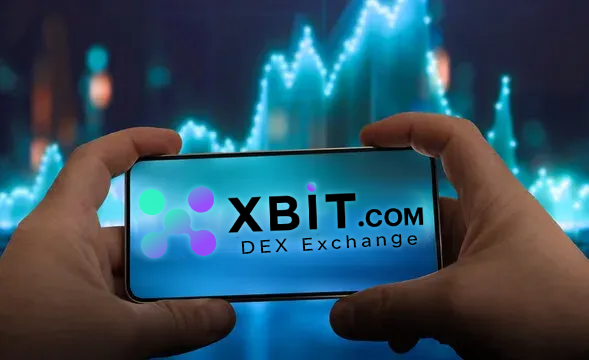In the spring of 2025, the digital currency derivatives market is undergoing an unprecedented transformation. Perpetual contracts, originally dominated by centralized exchanges (CEX), are now gradually being taken over by "decentralized trading platforms" (DEX), becoming a new hot spot in the crypto market.
In the past three months, the trading volume of multiple decentralized perpetual contract platforms has exploded. According to a report by The Cryptonomist on March 6, 2025, the average daily trading volume of DEX platforms such as Hyperliquid has steadily exceeded 4 billion to 6 billion US dollars, and some days even exceeded old platforms such as BitMEX and OKX. This trend not only indicates that the derivatives structure is being reconstructed, but also reflects from the side that users are forming a consensus on "trustless" financial transactions.

The price of freedom: the light and shadow of decentralized contracts
Perpetual contracts are essentially a financial derivative with unlimited duration and leveraged trading. It was originally regarded as a "high-risk playground" for speculators, but with the support of the DEX system, it has gradually been covered with the cloak of "freedom", "transparency" and "self-management".
This trend is not accidental. At the end of February 2025, the Chicago Mercantile Exchange (CME) announced that it would launch a regulated Solana perpetual futures product in response to the call of institutional clients for "trusted derivatives". At the same time, in the on-chain world, DEX platforms have begun to spontaneously build a sustainable ecosystem that does not require approval or KYC.
Among them, the new generation of DEX products represented by the XBIT decentralized exchange are trying to replicate the smooth trading experience of CEX through designs such as low-latency matching systems, smart risk control contracts, and on-chain margin mechanisms. The platform's recently launched mainstream trading pairs such as BTC/ETH not only support up to 20 times leverage, but also provide transparent pricing through decentralized oracles, allowing "institutional-level functions" to go to the public wallet for the first time.
Uneasy behind the craze: loopholes, manipulation and regulatory gaps
Of course, the rapid rise of decentralized perpetual contracts is also accompanied by worrying loopholes and risks.
In March 2025, an anonymous trader manipulated the liquidity of JELLY tokens on Hyperliquid to conduct abnormal liquidation arbitrage, triggering system fluctuations. This incident is not an isolated case, but a common problem in the current DEX perpetual track: the contract model, oracle mechanism, and fund pool structure are too dependent on mathematical assumptions and are still vulnerable to high-frequency speculators.
At the same time, regulators have also begun to focus. The EU MiCA framework has drafted disclosure obligations for on-chain derivatives, and the US SEC is also considering including leveraged products on DEX in the scope of commodity futures management. Once the legislation is passed, most current DEX platforms may face the identity dilemma of being positioned as a "quasi-regulatory platform."
In this regard, the XBIT decentralized trading platform has shown a more forward-looking strategic layout. While maintaining the autonomy of on-chain contracts, the platform actively introduces a community governance mechanism and supports the open source of audit contracts. Although it is still in its early stages, its concept of "transparent traceability + non-custodial guarantee" does provide a feasible paradigm for the industry.
Leverage is not the original sin, freedom is the ultimate test
Many people equate "perpetual contracts" with "high risk", believing that it will inevitably lead to irrational liquidation and excessive speculation. However, what really determines the risk is never the tool itself, but the user's intention and the design of the platform.
When we see more and more users choose to use lightweight perpetual platforms such as XBIT decentralized exchanges, it is not because it can add 50 times leverage and engage in contract casinos, but because it represents a trend: I want to continue to participate in the crypto world I believe in without being threatened by regulation, account freezing, and asset custody.
XBIT is not the only platform pursuing "self-disciplined trading on the chain", but its balance in stability, educational documents, and risk control logic does provide a possibility of "non-radicalization".
In the end: Is contract trading in the DEX era the light of freedom or a risk jungle?
As a product that "has both hedging value and gaming attributes", digital currency perpetual contracts are becoming one of the core financial infrastructures of the decentralized world.
It is difficult to say whether it is destined to succeed or just a temporary craze, but what is certain is that it reveals a reality - people would rather bear complexity and risk than completely surrender control of their assets.
Whether it is Hyperliquid, dYdX, or XBIT decentralized exchange, these platforms are a reflection of the financial thinking of this era. As technology continues to innovate and user quality continues to rise, perhaps in the near future, we can really build a fair, secure, and sustainable derivatives market independently without centralized intermediaries.
This is not only a victory for crypto users, but also another implementation of decentralized thinking.
















No comments yet